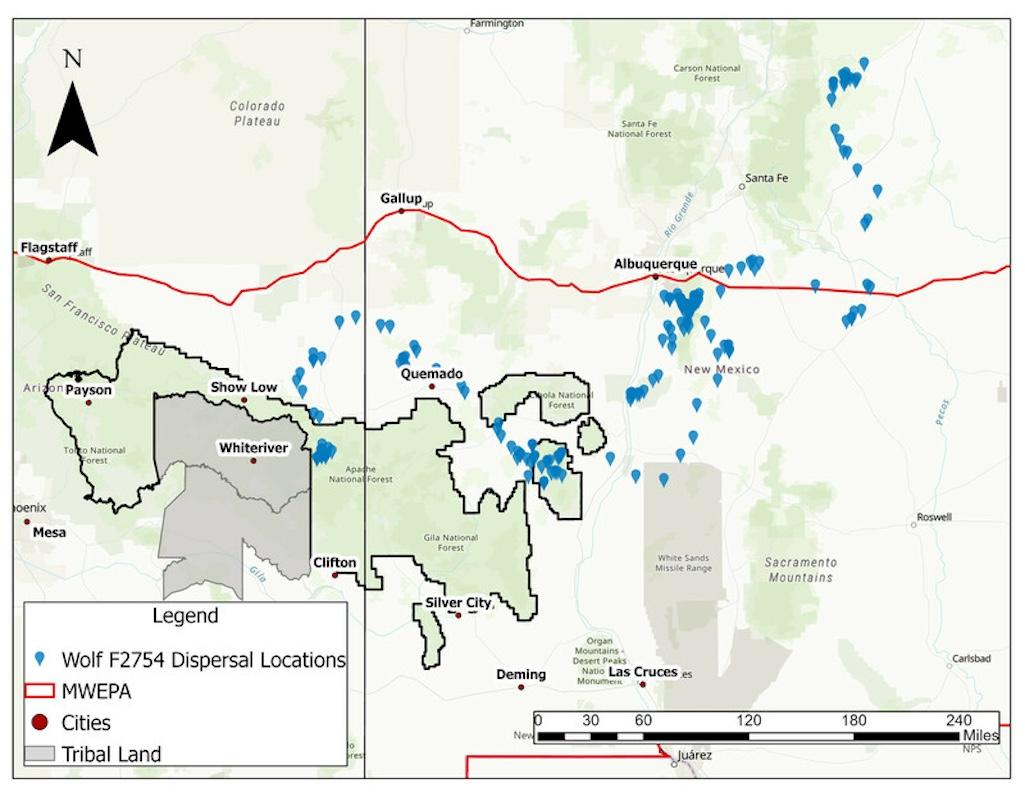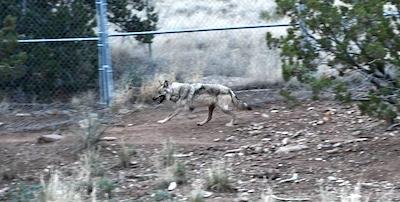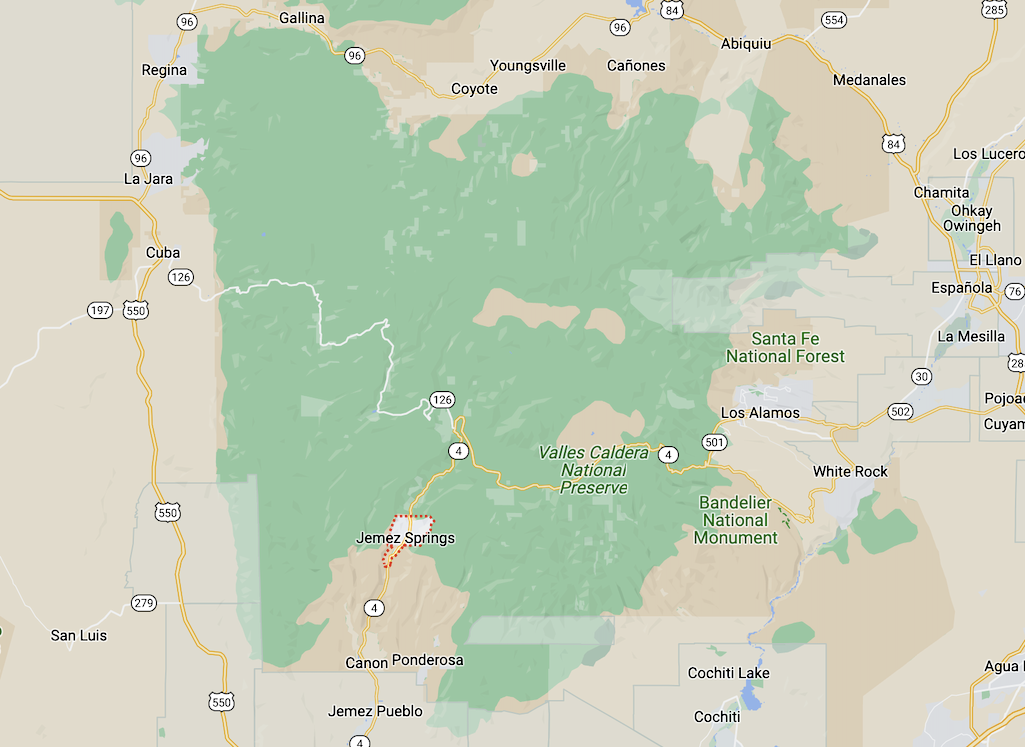
Asha, a female Mexican wolf who headed north towards Colorado last year, again has moved north. This map tracks her movements in 2022. Recently, she was spotted on the southern boundary of Valles Caldera National Preserve/USFWS
A female Mexican wolf with a penchant for roaming has turned up in northern New Mexico near Valles Caldera National Preserve, hundreds of miles from the Mexican Wolf Experimental Population Area.
Asha was tracked recently to Jemez Springs on the southern boundary of the national preserve, according to the U.S. Fish and Wildlife Service. Late last year the wolf also had roamed north, prompting Fish and Wildlife Service crews to capture her and return her to the experimental population area.
“This female’s repeated attempts to move north demonstrate the Mexican gray wolf’s natural inclination to roam,” Bryan Bird, Defenders of Wildlife Southwest program director, said Thursday. “She is in search of a mate and could soon find one in Colorado. This is a clear sign that wolves will again roam from the northern Rockies in Canada to the Sierra of Mexico if we let them.”

Asha was recently spotted near Jemez Springs, New Mexico/USFWS file
Michael Robinson, a senior conservation advocate at the Center for Biological Diversity, added that, “[W]olves are smart but they don’t read federal regulations and shouldn’t be bound by arbitrary political boundaries. Wolves also don’t read peer-reviewed studies, so it’s striking that Asha’s movements prove scientists’ work correct. The southern Rockies is within loping reach of endangered Mexican wolves and should be part of their recovery area.”
Smaller cousins of North American gray wolves, Mexican wolves long have been endangered. The predators historically ranged "throughout mountainous regions from central Mexico, through southeastern Arizona, southern New Mexico, and southwestern Texas," according to the U.S. Fish and Wildlife Service. It's possible that the wolf's historic range touched Saguaro National Park, Big Bend National Park, Guadalupe Mountains National Park, and Gila Cliff Dwellings National Monument, while Organ Pipe Cactus National Monument is thought to be on the fringe of the range.
The Mexican wolf is said to prefer mountain woodlands, such as those found in the Rincon District of Saguaro and the high country of Big Bend and Guadalupe Mountains national parks.
"We’re in court to revoke the federal regulation that requires the U.S. Fish and Wildlife Service to remove all Mexican wolves north of Interstate 40, even in cases such as this one where the wolf has caused no inconvenience or loss," Robinson said. "The provision ignores the science of wolf recovery."

Asha was tracked to the Jemez Mountains near Jemez Springs, New Mexico/Google Maps



Comments
What wild animal (other than Mexicam Wolves) are subject to a map of where they aren't allowed to wander? Did they do this to Bald Eagles? California Condors? Black footed Ferret? Not a realistic rule